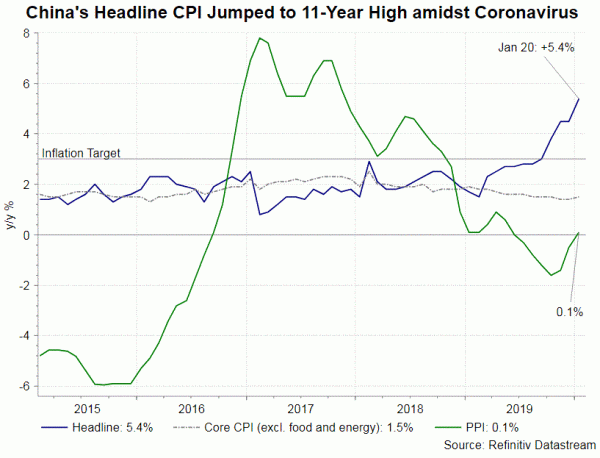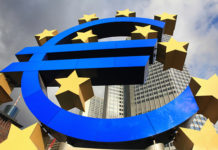Headline inflation in China soared to +5.4% y/y, the highest level in almost a decade, in January. This came in higher than consensus of +4.9% and December’s +4.5%. Once again food, especially pork, price was the key driver of the jump. Food price soared +20.6% y/y, accelerating from +17.4% in December. Pork price rose +116% in January, compared with +97% a month ago. Note that pork price contributed to +2.76 percentage point to headline CPI last month. Inflation in Hubei province, rose to +5.5%, higher than national average, in January. This suggests that the price level was lifted greatly in the province which has been the most severely affected by coronavirus. Core CPI, excluding food and energy price, climbed modestly higher to +1.6%, from December’s +1.3%.
PPI, the upstream price gauge, returned to inflation of +0.1%. It has been in the deflationary territory since July 2019. We believe the improvement was driven conclusion of Phase I trade deal with the US. This led to resumption of industrial activities.
Elevated inflation continues to create a dilemma for the PBOC, China’s central bank, in monetary policy implementation. Before the outbreak of coronavirus, we have been suggesting that China is caught between stabilizing growth and containing inflation. Monetary policy stance on the two objectives diverges. While accommodative monetary policies such as rate cut and reduction of RRR are required for the former, these risk exacerbating the latter.
The epidemic, which is expected to hit growth harder and send inflation higher, should make monetary policy decision more challenging. We expect the government to continue with monetary easing. However, it would be more targeted rather than broad-based. Last week, PBOC announced monetary easing measures to support the economy. Besides lowering the 7-day and 14-day reverse repo rate, each by -10 bps, to 2.4% and 2.55% respectively, the central bank also cut interest rates for corporations in Wuhan. The latter is an example of targeted easing.













